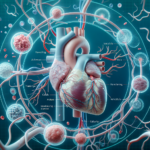Key Takeaways
- Stratasys 3D heart models enhance pre-surgical planning, leading to improved surgical outcomes.
- Advanced Stratasys 3D printing technology enables the creation of precise and realistic heart models.
- Material selection is crucial for producing models that mimic the feel and flexibility of real heart tissue.
- A step-by-step guide helps in transforming patient-specific medical images into a tangible 3D heart model.
- These models are not only valuable for surgical planning but also serve as exceptional educational tools.
Unveiling the Art of Stratasys 3D Heart Model Creation
What It Takes to Print a Heart
Imagine holding a human heart in your hands. Not a real heart, but a model so detailed and lifelike that it could fool you into thinking it’s the real thing. That’s what we’re aiming for when we create a 3D heart model. It’s not just about the technology; it’s about the craftsmanship, the precision, and the care that goes into each model. These models are more than just tools; they’re a bridge between technology and the human touch in medicine.
Stratasys 3D Printing Technology
Stratasys leads the pack when it comes to 3D printing technology, especially in the medical field. Their printers are capable of creating models with such detail that they’ve become invaluable in the world of surgery. But it’s not just about having a high-tech printer. It’s about understanding how to use it to its full potential to create heart models that can save lives.
The Role of Precision Craftsmanship in Medical Modeling
Accuracy and Attention to Detail
When it comes to creating a 3D heart model, accuracy is everything. Surgeons rely on these models to plan complex procedures, which means every artery, every valve, and every chamber needs to be replicated perfectly. It’s a meticulous process that requires a keen eye for detail and a steady hand. But the payoff is immense, leading to better outcomes for patients.
Material Selection for Lifelike Models
Choosing the right materials is as important as the printing process itself. The goal is to create a model that not only looks like a real heart but feels like one too. That means selecting materials that can mimic the softness and flexibility of heart tissue. It’s a delicate balance, but when done right, it provides surgeons with the most realistic representation of the patient’s heart.
Step-by-Step Guide to Creating a 3D Heart Model
From Medical Imaging to Digital Design
The journey of creating a 3D heart model begins with a scan of the patient’s actual heart. This could be from an MRI or a CT scan. These images are the blueprint from which the model will be crafted. The next step is to use specialized software to transform these 2D images into a 3D digital model. This is where the magic happens, as we begin to see the heart take shape in a digital space.
But we’re just getting started. The digital model is refined, adjusted, and prepared for the printing process. It’s a dance between technology and human judgment, ensuring that the final product will be as close to the real thing as possible. And once the digital design is ready, it’s time to bring it into the physical world.
Choosing the Right Printer and Materials
Now, let’s get into the nitty-gritty of how we make these heart models come to life. The choice of printer and materials is critical. For the heart models, we use Stratasys’ advanced printers, which can handle multiple materials and colors to create detailed and functional replicas. These printers are not your average desktop 3D printers; they’re sophisticated machines that can replicate the complexity of human organs.
- First, ensure the printer has multi-material capabilities to produce the varying textures of heart tissue.
- Next, select a printer that can handle the resolution needed for intricate details like blood vessels.
- Finally, choose materials that are biocompatible when necessary, especially if the model will be used in a sterile environment.
Remember, the goal is to create a model that’s as realistic as possible, to give surgeons the best tool for planning and practicing. Therefore, invest in quality to ensure the final product meets the high standards required for medical use.
The Printing Process: Layer by Layer
With the right equipment and materials chosen, it’s time to start the printing process. This is where the digital design becomes a tangible object. The printer works meticulously, laying down layer after layer of material, building the heart from the bottom up. It’s a slow and precise process, but watching a heart model take shape is nothing short of awe-inspiring.
Applications of 3D Heart Models in Medicine
3D heart models have revolutionized the way we approach cardiac care. They’re not just models; they’re a new window into the human body that allows us to plan, practice, and perfect surgical procedures before making the first incision.
Pre-surgical Planning and Simulation
One of the most critical applications of 3D heart models is in pre-surgical planning. Surgeons use these models to map out complex procedures, anticipate challenges, and practice the steps they will take during the actual surgery. This preparation can reduce the time a patient spends on the operating table and increase the likelihood of a successful outcome.
“Using a 3D heart model for pre-surgical planning is like having a rehearsal for a play. It allows the surgical team to choreograph every move with precision.”
Educational Tools for Medical Training
Besides their use in surgical planning, 3D heart models are invaluable educational tools. Medical students and trainees can get a hands-on experience, understanding the anatomy and pathology of the heart in a way that textbooks can’t provide. These models bring learning to life, fostering a deeper comprehension of cardiac conditions and treatments.
For educators, the models are a breakthrough, enabling them to illustrate complex concepts and procedures clearly and effectively. There’s nothing quite like holding a model in your hands to fully grasp the intricacies of the human heart.
Benefits of 3D-Printed Heart Models for Patient Outcomes
Enhanced Surgical Precision and Success Rates
The tangible benefits of 3D-printed heart models in surgical outcomes are clear and profound. When surgeons have the ability to interact with a patient-specific heart model before surgery, they gain insights that 2D images simply cannot provide. This pre-operative exploration allows for a deeper understanding of the patient’s unique anatomy, leading to more precise surgical interventions and, as a result, better success rates.
Personalized Medicine: Tailored Treatment for Patients
Personalized medicine is at the forefront of healthcare innovation, and 3D-printed heart models are a prime example of this. By tailoring surgical plans to the individual, rather than relying on a one-size-fits-all approach, patient outcomes are significantly improved. These models enable a level of customization in surgical planning that was previously unattainable, paving the way for treatments that are specifically designed around each patient’s unique needs.
FAQ
How realistic are Stratasys 3D heart models?
Stratasys 3D heart models are incredibly realistic, mimicking the texture, flexibility, and coloration of actual human heart tissue. The advanced multi-material printing technology allows for the creation of models that can simulate different tissue densities and pathologies, providing an unparalleled tool for surgeons and medical professionals.
“Stratasys 3D heart models are so lifelike that they have become indispensable in the planning and practice of complex heart surgeries.”
Can 3D heart models be used during actual surgery?
While 3D heart models are primarily used for pre-surgical planning and rehearsal, they are not typically used during the actual surgery. Their main purpose is to provide a deeper understanding of the patient’s anatomy to reduce surgical time and improve outcomes.
How long does it take to print a 3D heart model?
The time it takes to print a 3D heart model can vary depending on the complexity of the heart’s anatomy and the resolution required. Generally, it can take anywhere from several hours to a full day. The preparation time, including imaging and design, can add additional time to the process.
Are these models helpful for all types of heart diseases?
3D heart models are beneficial for a wide range of heart diseases, particularly those requiring surgical intervention. They are especially useful for complex congenital heart defects, valve replacements, and other conditions where a detailed understanding of the patient’s unique heart structure is crucial for successful treatment.
What is the cost-effectiveness of using 3D heart models?
When considering the cost-effectiveness of 3D heart models, one must weigh the initial investment against the potential for improved surgical outcomes, reduced operating times, and decreased risk of complications. Although the cost of printing a single model can be significant, the value it provides in surgical planning and patient care can lead to overall cost savings by minimizing the need for additional surgeries and reducing time spent in the operating room.
The use of 3D printed heart models is revolutionizing the field of cardiac surgery. By providing a tangible, anatomically accurate representation of the patient’s heart, surgeons can plan and practice complex procedures with a level of precision that was previously unattainable. This not only enhances the surgeon’s understanding of the unique challenges of each case but also helps in educating patients about their conditions and the proposed interventions.





